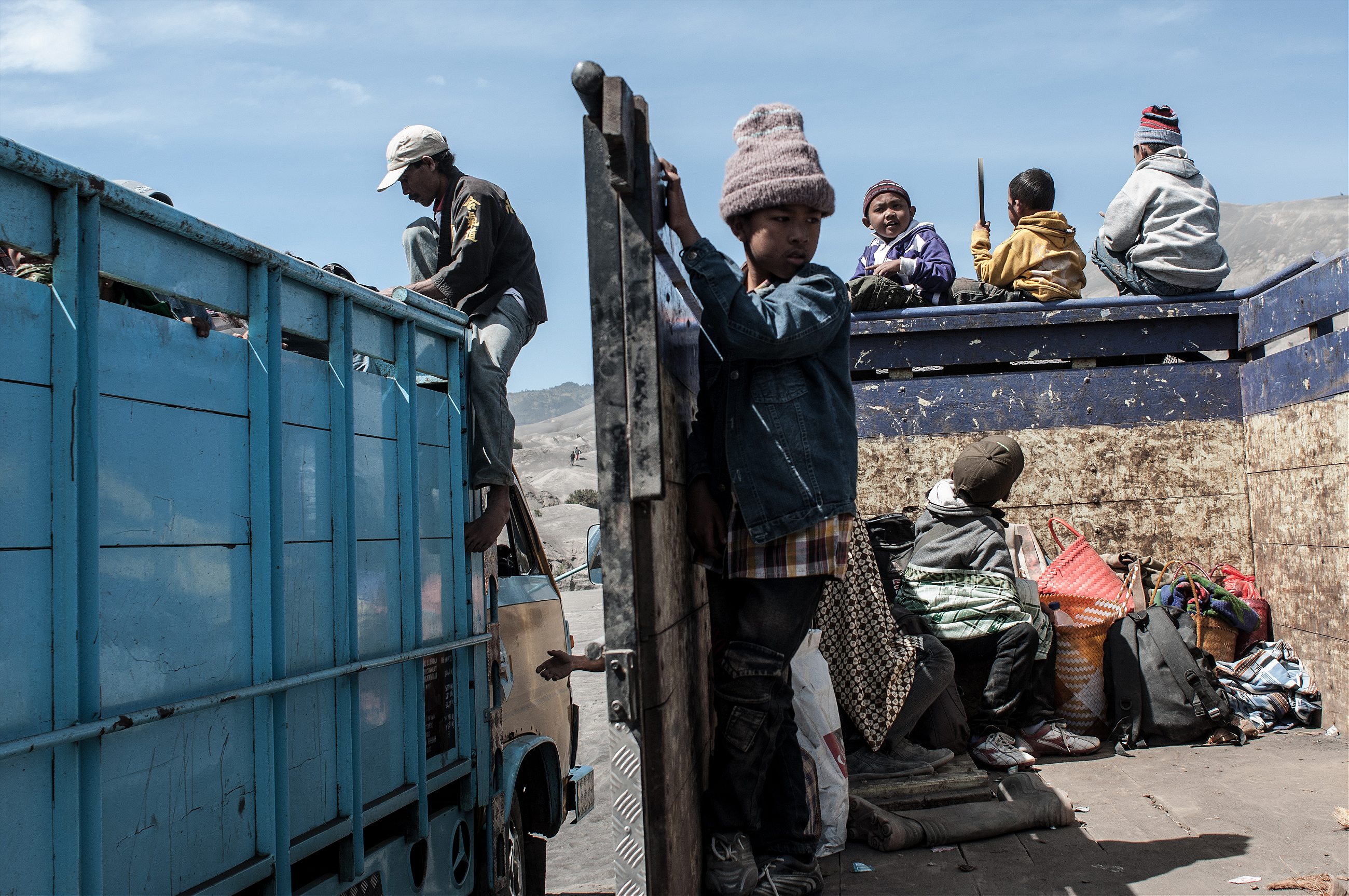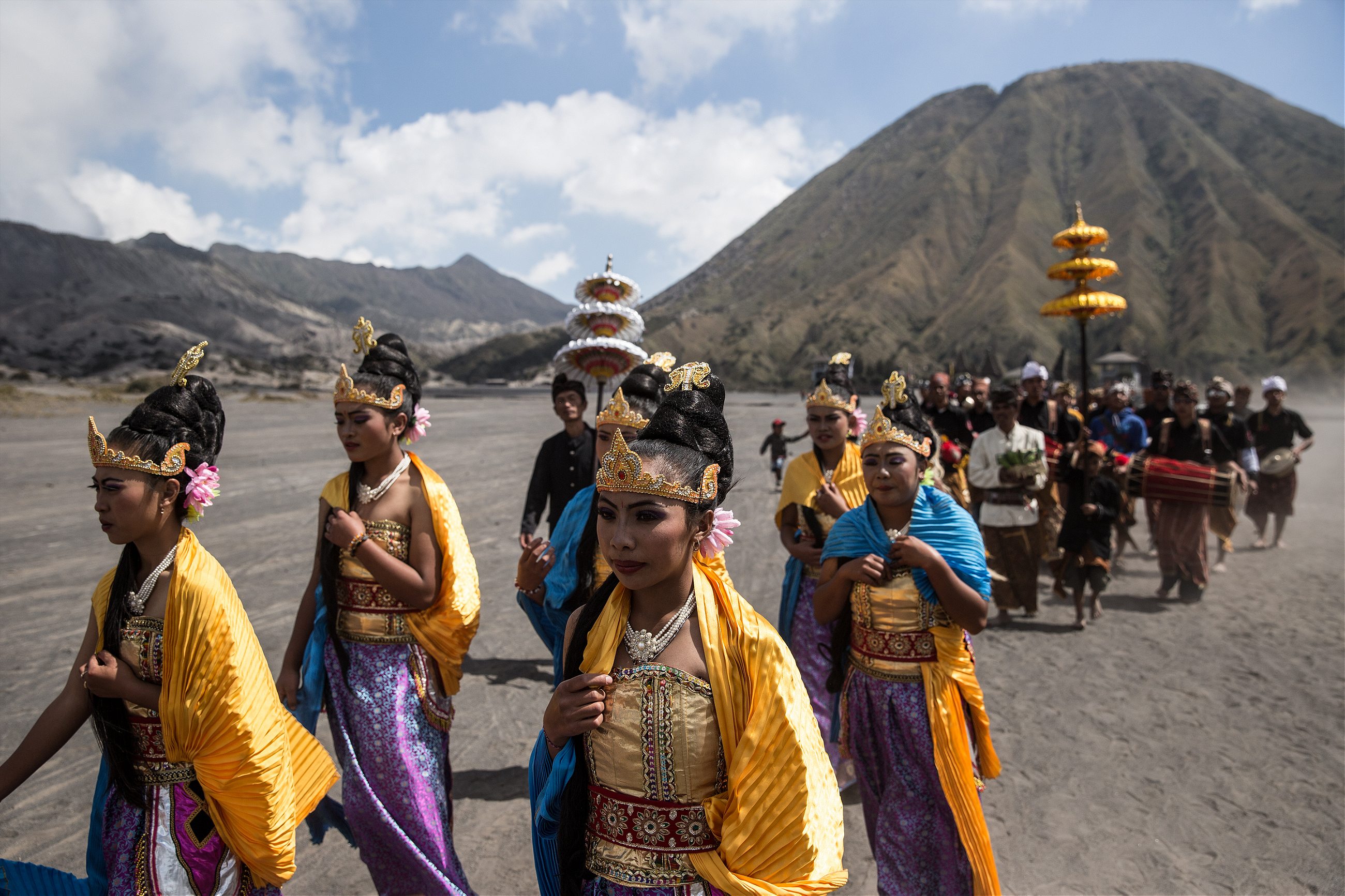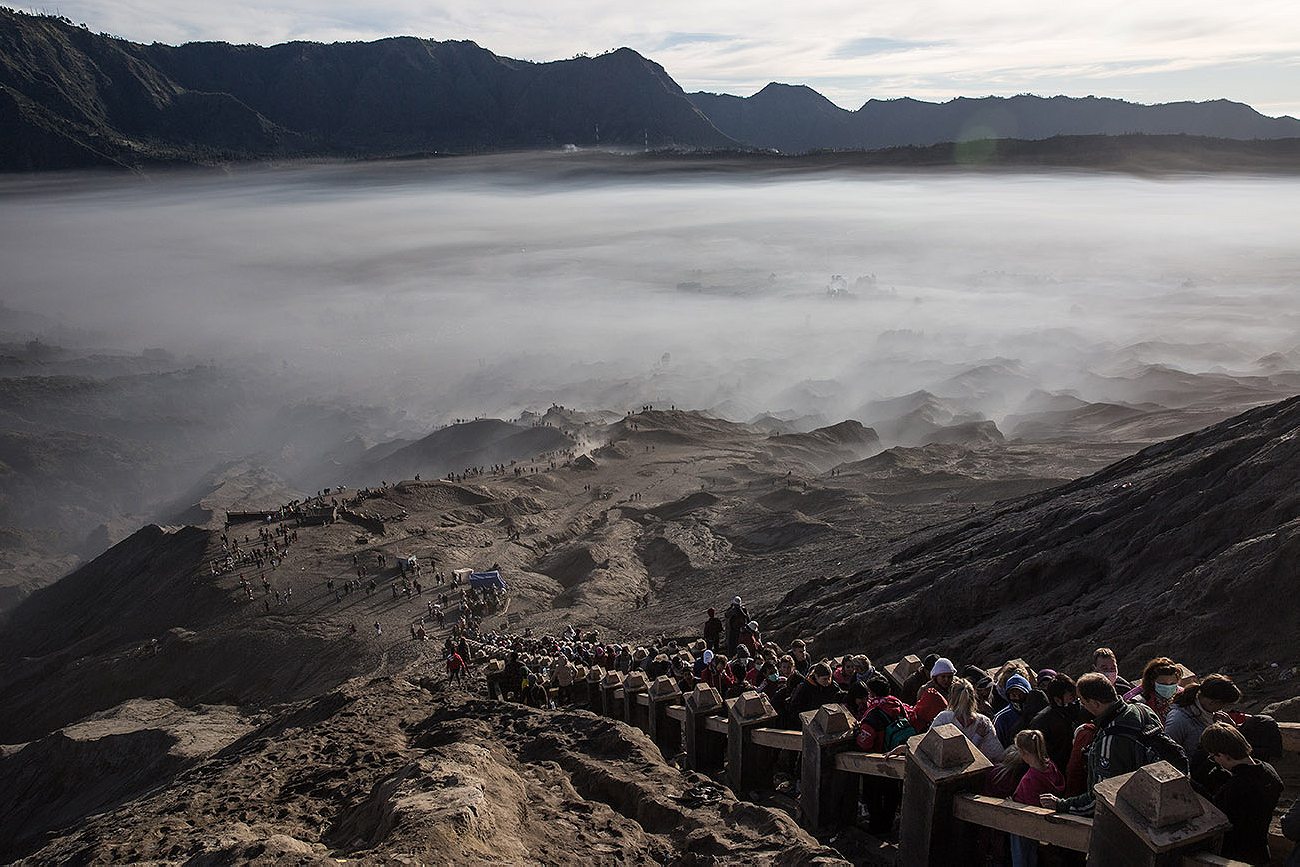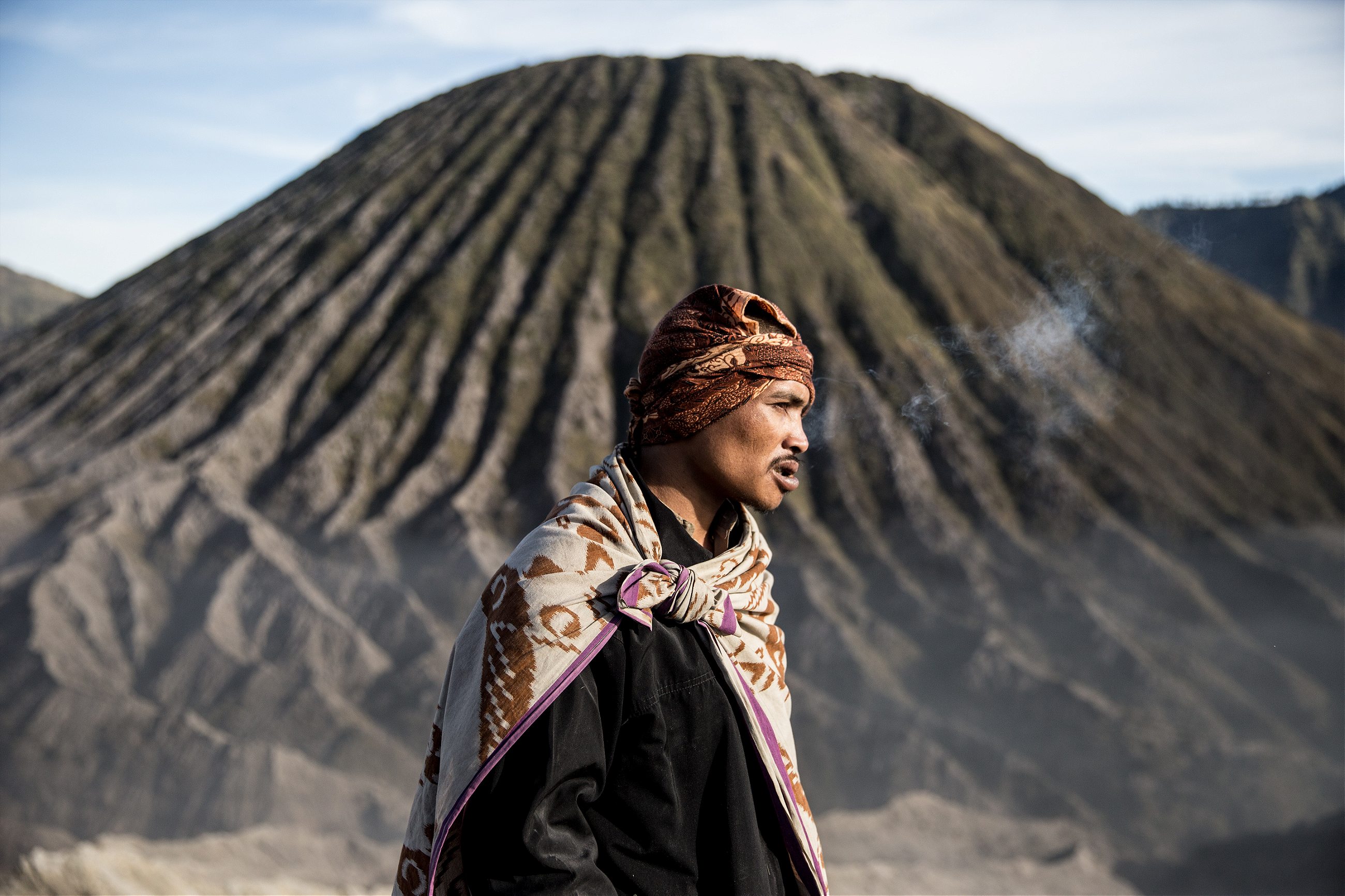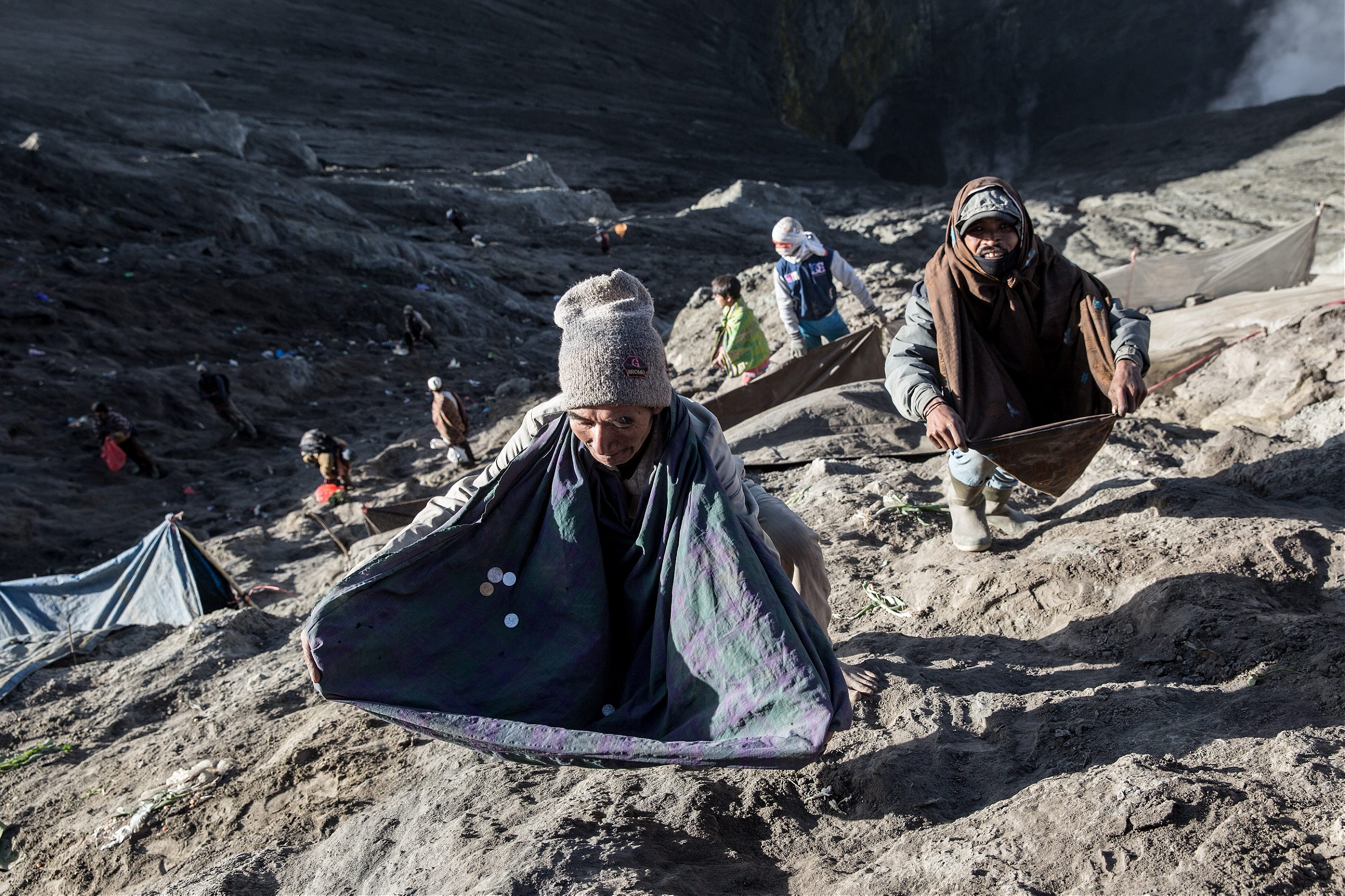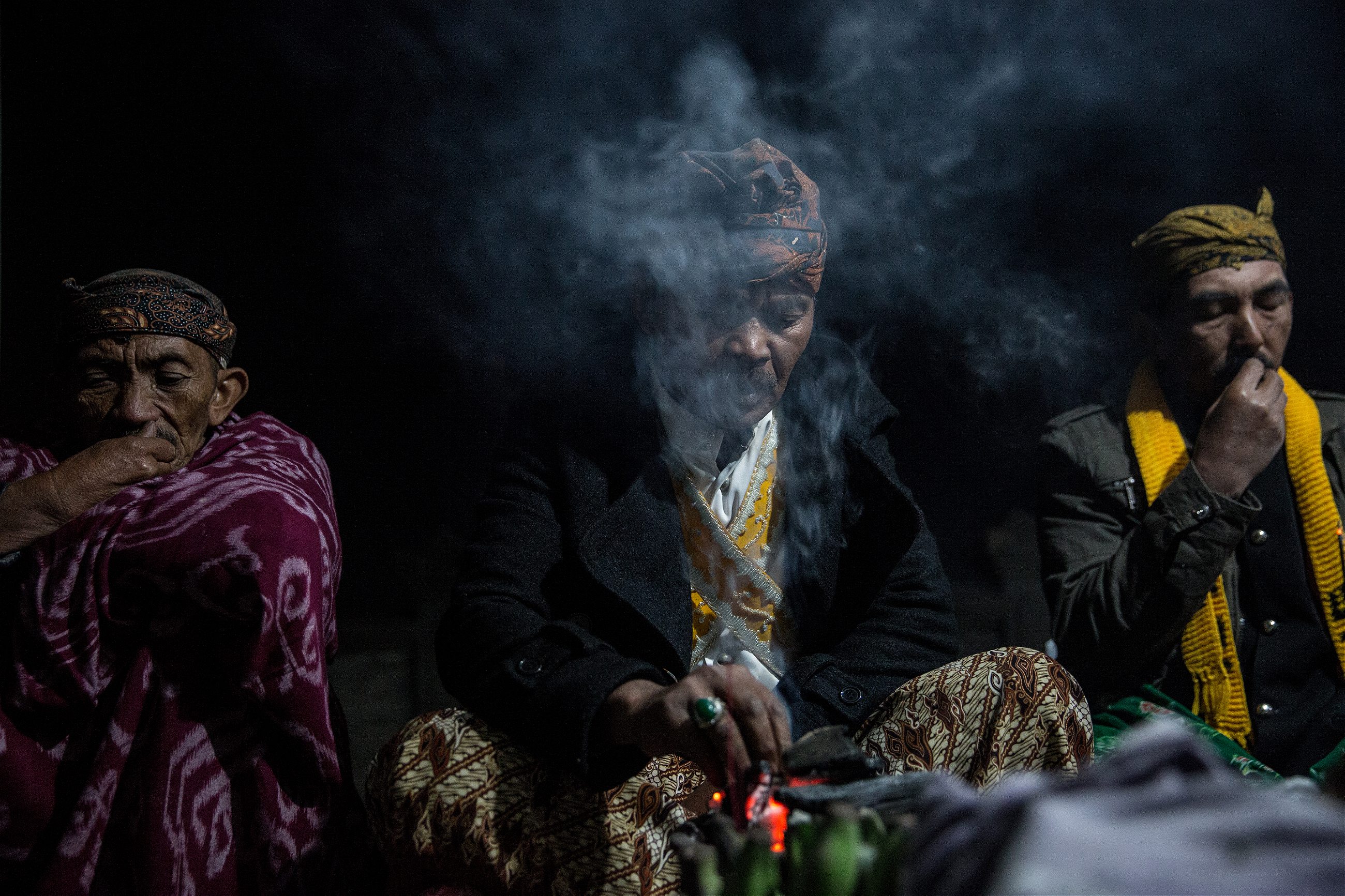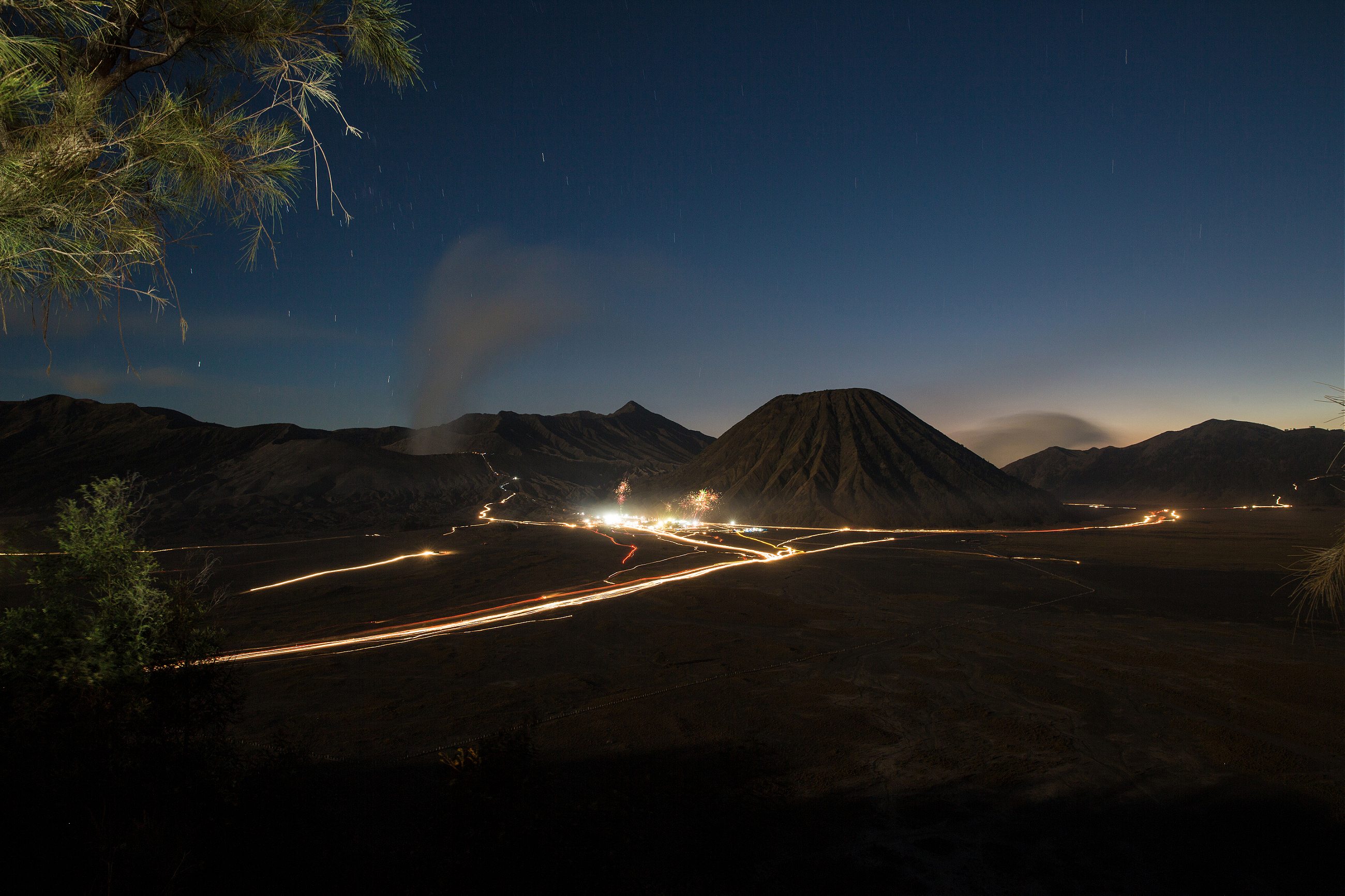During Yadnya Kasada, the Tengger people of Indonesia climb Mount Bromo and throw money, rice, fruit, vegetables, goats, chickens, and even cows into the volcano’s crater.
Bromo-Tengger-Semeru National Park in East Java, Indonesia, is named for its venerated, active volcanoes: Mount Semeru, which at 12,060ft is Java’s highest mountain, and Mount Bromo, distinctive for its large crater that regularly emits white, sulphurous smoke. This isolated, barren terrain is also home to roughly 90,000 Tengger people, a Hindu ethnic minority in the predominantly Muslim Indonesian archipelago.
Every year, hundreds of Tenggerese travel from nearby villages to climb Mount Bromo and throw money, rice, fruit, vegetables, goats, chickens, and even cows—all live—into the volcano’s crater. These offerings are part of the community’s most significant yearly event, the Yadnya Kasada festival, which is held on the 14th day of the 12th month (Kasada) in the traditional Hindu Lunar calendar. The festival and its ceremony honor Sang Hyang Widhi Wasa (roughly, “Big Almighty Lord”— a deity the Tengger share with Balinese Hindus) and Mahadeva, the God of the Mountain.
The Yadnya Kasada festival is organized by Pura Luhur Poten, a Hindu temple which sits on the vast sand plain (the “Sea of Sand”) at the foot of Mount Bromo. Tengger people of all ages gather in colorful attire, to the beat of slow Javanese drums and traditional hymns, while 27 priests—one from each Tenggerese village—perform a mass and call on the gods to bless the offerings that will be hurled into the abyss. The crowd then ambles en masse up Mount Bromo to the crater’s edge to make their sacrifices. Despite the danger, some try to climb down into the crater afterwards to reclaim sacrificed items. Some villagers wait below with nets to catch the offerings thrown by worshippers.
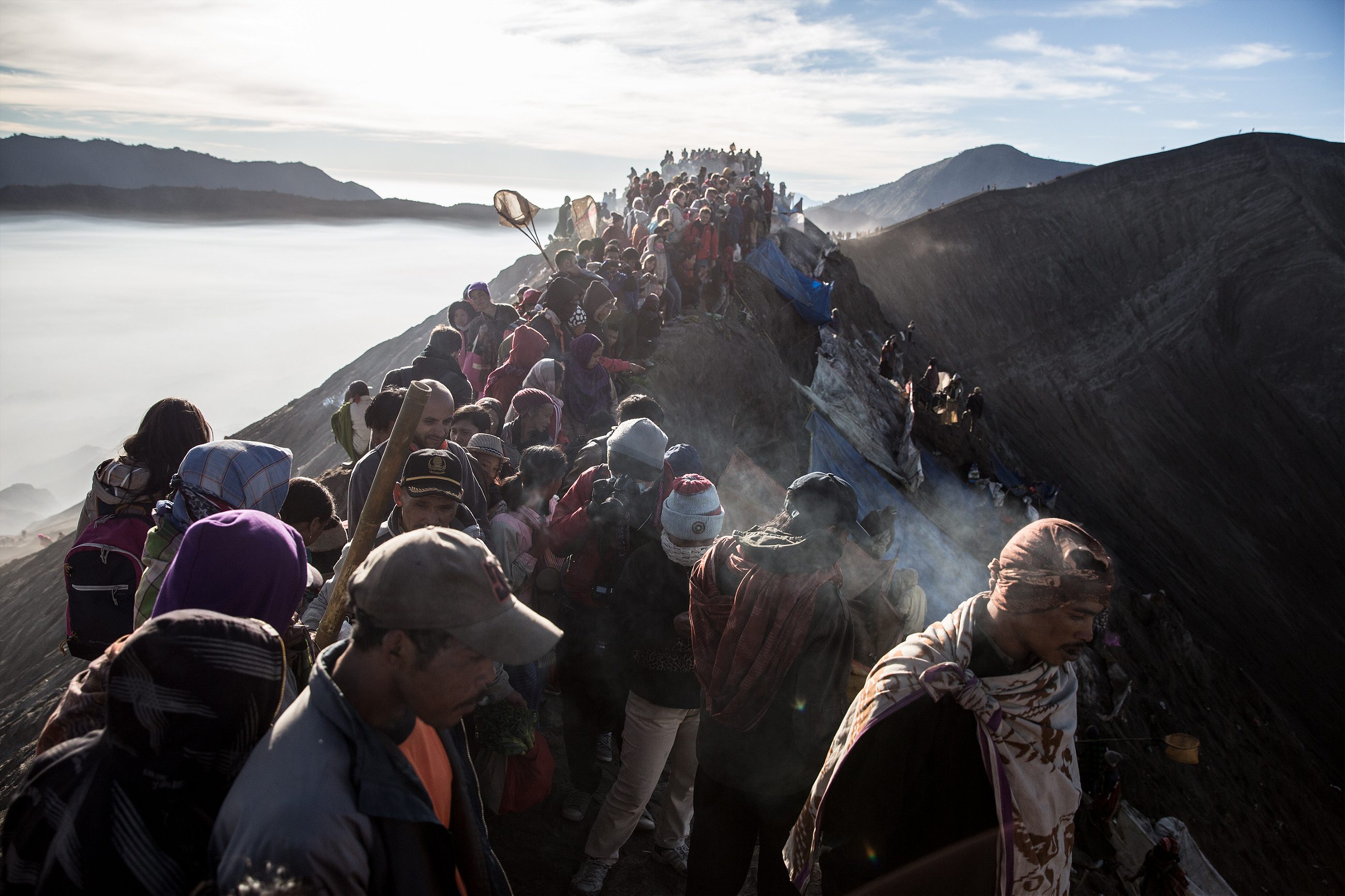
Yadnya Kasada is rooted in the Tengger origin story and in a legend dating back to the Majapahit kingdom. The Tengger claim to be descendants of Majapahit princes, who ruled Java (modern-day Indonesia) from 1293 to 1500 under one of the region’s last empires, which stretched from Sumatra to New Guinea. According to the legend, during the reign of King Brajiwata the queen’s daughter and her Brahmin husband were among those who fled the faltering Majapahit kingdom in the 15th century, when Islam spread throughout Java. They and their followers took refuge in the mountains (where the modern-day Tengger descendents reside) and lived peacefully, preserving their religion, for many years.
However, the couple found they were unable to have children. In despair, they climbed to the top of Mount Bromo to meditate and beseech its god for help. Moved by their faith, the mountain god promised them many children—on the condition that their youngest be sacrificed into the volcano’s crater.
After many years of successful child-rearing, they were called upon to fulfill their end of the bargain and sacrifice their 25th child, Prince Kesuma, to the mountain. When they refused, Mount Bromo erupted in anger and swallowed Kesuma into its crater. An alternative version holds that they were merely threatened with catastrophe before willingly sacrificing Kesuma. To appease the mountain god, Kesuma’s siblings held an offering ceremony at the crater every year—the origins of today’s Yadnya Kasada.



